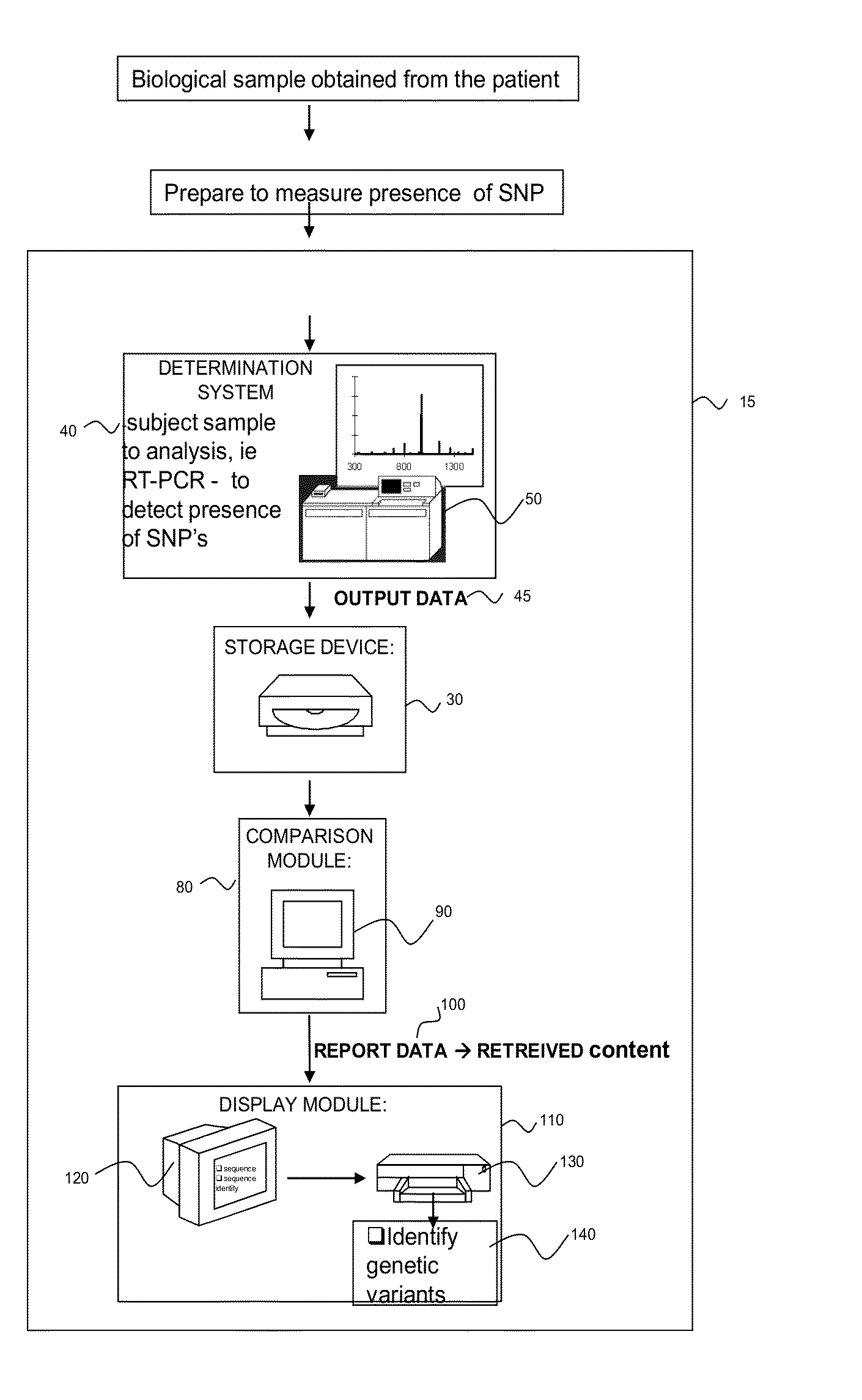Identification of thrombosis or bleeding risk in an individual with and without Anti-platelet therapy
a technology of thrombosis and risk, which is applied in the direction of biological material analysis, dna/rna fragmentation, and after-treatment of biomass, etc. it can solve the problems of no assessment of baseline thrombotic tendancy or bleeding risk with anti-platelet therapy, no clinical practice assessment of baseline thrombotic tendancy or bleeding risk, and achieves the effect of enhancing stability of the multimeric complex and preventing uncontrolled cell proliferation
- Summary
- Abstract
- Description
- Claims
- Application Information
AI Technical Summary
Benefits of technology
Problems solved by technology
Method used
Image
Examples
Embodiment Construction
[0056]The invention relates to an assay / method / system for identifying individuals that have a tendancy to thrombotic, atherothrombotic or bleeding events or an assay / method / system for identifying suitable treatment regimes for individuals in need thereof. The diagnostic / prognostic variable is one of a group of SNP variants identified in Tables 1 and 2 below, located in the PPARGC1β, CNTN4, LZTS1, and KCNE4 genes. The identification of such individuals is useful as it allows a clinician to tailor clinical intervention based on the risk identified by the assay. The invention also relates to a pharmacogenomic assay for identifying individuals who are suitable for anti-platelet therapy, in which the biomarker is one or more of a group of SNP variables identified in Tables 1 and 2 below, located in the PPARGC1β, CNTN4, LZTS1, and KCNE4 genes. The assay is useful as it helps identify individuals for which the antithrombotic benefits of the anti-platelet drug outweigh the bleeding risks.
[0...
PUM
| Property | Measurement | Unit |
|---|---|---|
| Pressure | aaaaa | aaaaa |
| Cell angle | aaaaa | aaaaa |
Abstract
Description
Claims
Application Information
 Login to View More
Login to View More - R&D
- Intellectual Property
- Life Sciences
- Materials
- Tech Scout
- Unparalleled Data Quality
- Higher Quality Content
- 60% Fewer Hallucinations
Browse by: Latest US Patents, China's latest patents, Technical Efficacy Thesaurus, Application Domain, Technology Topic, Popular Technical Reports.
© 2025 PatSnap. All rights reserved.Legal|Privacy policy|Modern Slavery Act Transparency Statement|Sitemap|About US| Contact US: help@patsnap.com

